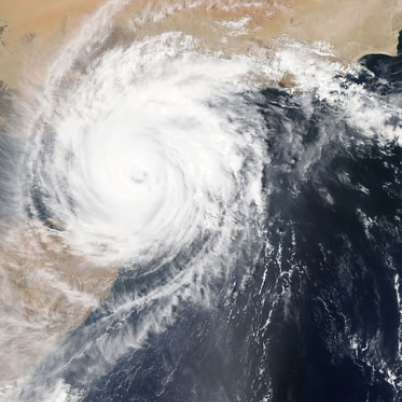Types of sensitivity
Climate sensitivity typically defines the warming response – with global surface temperatures (K or °C) considered an obvious choice to represent the overall climate (Knutti and Rugenstein, 2015)- to a doubling of CO2 emissions (2xCO2), with respect to pre-industrial atmospheric levels, when human CO2 emissions were considerably lower.
However, definitions of climate sensitivity have been evolving overtime – with certain metrics considered more useful – including Equilibrium Climate Sensitivity (ECS) and Transient Climate Response (TCR), both of which are considered useful metrics in summarising the temperature response to an external agent such as GHG emissions, volcanic eruptions or ozone. These agents are known as radiative forcing agents (Stocker et al, 2013).
ECS can be defined as the response of global surface temperatures following a doubling of atmospheric CO2, once a new climate equilibrium state has been established. Where a new equilibrium state refers to a climate that has adjusted to increased CO2 emissions, a point at which, if CO2 emissions were to stop, Earth’s temperature remains constant, as the climate system has reached a ‘new’ normal state (Forster et al., 2007; Knutti and Hergel, 2008; Stocker et al., 2013). The climate system acts to stabilise a change in the Earth’s energy balance by increasing surface temperatures – increasing the output of radiation into space – this acts to balance increased energy input caused by CO2 increases.
TCR characterises the warming at the time of a doubling of CO2 concentrations, following 1% increase in CO2 per year (Stocker et al., 2013; Meehl et al., 2020), this provides a metric for the rate of warming as the climate progresses toward a new equilibrium (Knutti and Hergel, 2008).
Both ECS and TCR are considered useful metrics for summarising the global temperature response to an external radiative forcing (Stocker et al., 2013). However, a fundamental aspect of both metrics is the timescale considered (Meehl et al., 2020), with ECS characterising the eventual warming once heat has dispersed equally between the ocean and atmosphere, thus, ECS operates on multi-century timescales (Stocker et al, 2013). In contrast, TCR is considered more relevant over decadal timescales, encompassing 21st century climate change (Knutti et al., 2017).
Estimates of sensitivity
Svante Arrenhius (1896) and Guy Callendar (1938) estimated that if the concentration of CO2 in the atmosphere doubles, the Earth’s atmosphere gets between 2°C and 5°C warmer (Knutti and Hergel, 2008). Overtime, Charney et al. (1979) produced a range between 1.5°C-4.5°C, this estimate came from two early climate models and is considered by some as inadequate by today’s standards (Knutti et al., 2017). However, even with significant improvements in observations, models and scientific understanding, a number of studies produce ECS values similar to those given by Charney et al. (1979), making this a well-recognised range in climate science. For instance, the Intergovernmental Panel on Climate Change (IPCC) Fourth Assessment Report (AR4) produced a ‘likely’ sensitivity between 2°C-4.5°C (Meehl et al., 2007; Tomassini et al., 2007; Knutti and Hergel, 2008), this is supported by the IPCC Fifth Assessment Report (AR5), again, providing a ‘likely’ sensitivity in the range 1.5°C-4.5°C and an ‘extremely unlikely’ ECS value of less than 1°C (Stocker et al., 2013).
As TCR can be inferred from the ratio of forcing to observed warming (Knutti et al., 2017), estimates of TCR are considerably lower compared with ECS ranges, reflected in the TCR values produced in the IPCC AR5 report showing ‘likely’ estimates between 1°C-2.5°C and ‘extremely unlikely’ TCR values over 3°C (Stocker et al., 2013). Additionally, Knutti et al. (2017) showed that of 56 studies between 2001 and 2016, based on multiple observational and modelling methods, a large majority produce TCR sensitivities within the IPCC AR5 range.
Feedbacks drive uncertainty
Climate sensitivity is often seen as one of the major sources of uncertainty in climate science (Wigley and Raper, 2001; Cox and Stephenson, 2007; Knutti and Hergel, 2008). The lack of a definitive value and therefore large spread amongst estimates, particularly ECS, can be explained by additional effects that influence the global climate response, termed ‘climate feedbacks’ (Knutti and Rugenstein, 2015). Climate feedbacks are mechanisms that lead to an overall warming in the globe (positive feedback) or an overall cooling (negative feedback). In highlighting the importance of feedbacks, a simple energy balance equation, suggests that a 2xCO2 would cause a basic warming response of approximately 1.2°C (Hansen et al., 1984; Randall et al., 2007), in complete contrast to the recognised 1.5°C-4.5°C range (Stocker et al., 2013). In practice, an initial forcing change induces feedback loops, leading to an amplification or dampening of that initial perturbation, labelled ‘positive’ and ‘negative’ feedbacks, respectively Climate models often agree on an overall net positive amplification on global surface temperatures (Stocker et al., 2013; Loeb et al., 2016), however, it is in both the magnitude and nature of these feedbacks that are considered the dominant source of uncertainty in sensitivity estimates (Wolff et al., 2015). Here are some examples of climate feedback processes that can exacerbate or diminish global warming driven by GHGs.
Water Vapour Feedback (WVF) and Lapse Rate Feedback (LRF)
WVF – where water vapour is in itself a strong GHG -describes an amplified GHG effect due to increased concentrations and residence time of atmospheric water vapor, as a consequence of an enhanced GHG effect (Randall et al., 2007; Langenbrunner 2019). WVF can also be strongly coupled to the LRF, which describes variability in the strength of the GHG effect caused by temperature differences between the lower and upper atmosphere (Cess, 1975). WVF is considered relatively understood and represented in both theory and models (Knutti and Rugenstein, 2015; Wolff et al., 2015), although, LRF shows a large spread among models and remains challenging to fully constrain (Randall et al., 2007; Knutti and Rugenstein, 2015). Nevertheless, the combination of these two feedbacks represents the strongest feedback, accounting for an approximate 50% increase in the basic warming response (Randall et al., 2007).
Surface albedo feedback
The albedo of a surface describes percent of incoming solar radiation reflected by the surface, therefore a measure of the reflectivity, with high albedos implying more incoming solar radiation is reflected. Budyko (1969) and Sellers (1969) were the first to suggest (and model) that an initial forcing change, leads to a decreased sea ice extent, allowing ocean waters to absorb a larger percentage of incident solar radiation – with sea ice being more reflective in comparison to the ocean (Pistone et al., 2014) – consequently, more energy remains in the global climate system, leading to an amplifying feedback effect, as less ice formation is able to take place. Understanding ice, ocean and atmosphere dynamics is crucial for developing our understanding of feedbacks in polar regions (Wolff et al., 2015).
Cloud feedbacks
Clouds represent the largest contributors to uncertainty in sensitivity estimates (Randall et al., 2007; Stocker et al., 2013; Wolff et al., 2015). Clouds are able to interact with both the incoming solar radiation and outgoing radiation (emitted by the Earths surface as heat, or reflected by the clouds), acting through processes surrounding the amount, thickness and altitude of clouds (Zelinka et al., 2016), allowing for either a net negative or positive feedback effect. Consequently, a key source of uncertainty lies in the response of these cloud components to GHG-induced warming, for instance, cloud amount feedbacks refer to the spatial distribution of clouds and is strongly dependant on cloud type. Understanding the response of stratocumulus clouds (that have a large spatial coverage over the oceans) to warming is essential for tackling cloud feedback uncertainty. Additionally, the representation of cloud components in models also aggregates to sensitivity uncertainty, with formation processes happening at different scales – from microphysical to atmospheric-level – the lack of robust model capture and access to large amounts of computational power adds to uncertainties (Randall et al., 2007; Stocker et al., 2013).
Lines of evidence
ECS and TCR estimates cannot be made from direct observations and have to be inferred from different lines of evidence, all varying in their complexity. Figure 1 illustrates the varying lines of evidence and methods used to estimate climate sensitivity, the plot also highlights the large spread amongst estimates.
Climate models
Climate models use mathematical equations in an attempt to represent the physical processes, physics and interactions of energy within the earth’s climate system. From this, they often vary in their ability to simulate the physics, thermodynamics and other influential processes in the climate system, with Global Climate Models (GCMs) attempting to best represent the relevant processes surrounding climate sensitivity (Zelinka et al., 2020). Climate models produce a large range of ECS values, with some studies showing values below 2°C (Knutti and Rugenstein, 2015), however, a number of studies suggest a best estimate between 3°C-4.5°C (Huber et al., 2011; Sherwood et al., 2014). Cloud feedbacks are suggested to produce the highest amount of uncertainty; particularly regarding cloud type and spatial distribution (Knutti and Rugenstein, 2015).
The Coupled Model Intercomparison Project (CMIP) allows for the comparison of multiple GCM calculations of temperatures in the future, accounting for different emission scenarios and bringing together evidence from different climate models. When comparing ECS estimates from the latest generation of models (CMIP6), to those shown in the AR4 and AR5, it is clear to see an increase in the lower and upper bound of ECS, with values ranging between 1.8°C-5.6°C from 27 GCMs, 10 of which exceed 4.5°C (Zelinka et al., 2020). This increase has been attributed to a stronger positive cloud feedback effect (Zelinka et al., 2020), again, highlighting the uncertainty surrounding the representation of clouds in models.
Wider implications
Providing robust sensitivity values allows for a clearer picture of the temperature response to CO2 emissions, potentially influencing decisions on key emission targets. ECS values may be of limited value for short-term climate change, due to the time needed for the climate to restore balance. In contrast, TCR estimates may be considered more relevant for 21st century climate change, thus relating more closely to policy and mitigation decisions (Knutti et al., 2017). This is highlighted in a study from Hope (2015), who suggests a value of halving the uncertainty in TCR estimates could be in the region of $10.3 trillion, reaching $9.7 trillion if emissions are adjusted by 2030 (Hope, 2015).
Climate sensitivity represents a key scientific challenge, primarily due to uncertainties surrounding feedbacks, however, since early sensitivity estimates, significant improvements have been made in both theory and modelling of key feedbacks (Knutti and Hergerl, 2008). However, clouds and related feedbacks remain a persistent obstacle, with some suggesting it could decades before clouds are able to be fully represented in climate models (Knutti et al., 2017). Our understanding of climate sensitivity and key uncertainties has significantly improved over time, but it may be a little longer before we are able to produce values that best represent future climate change.




